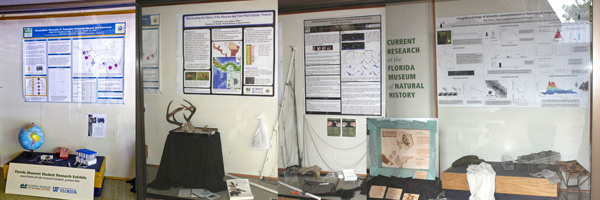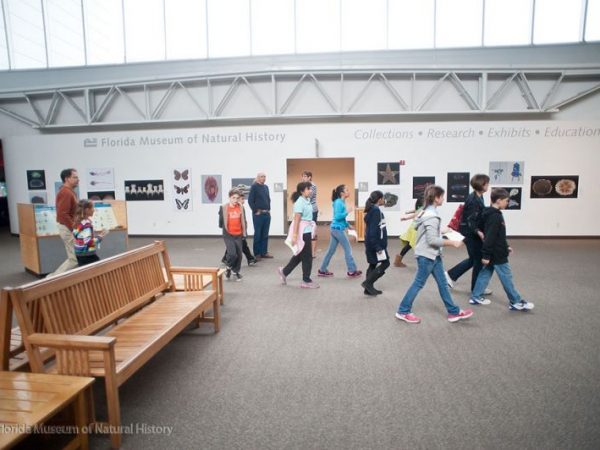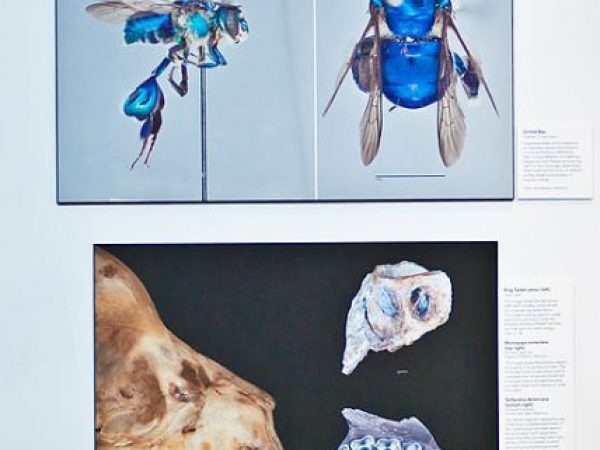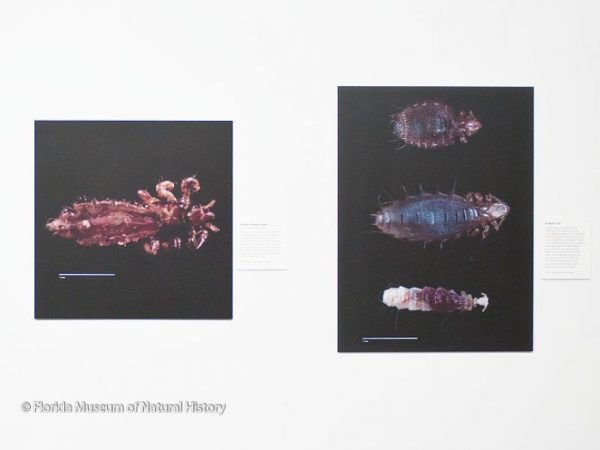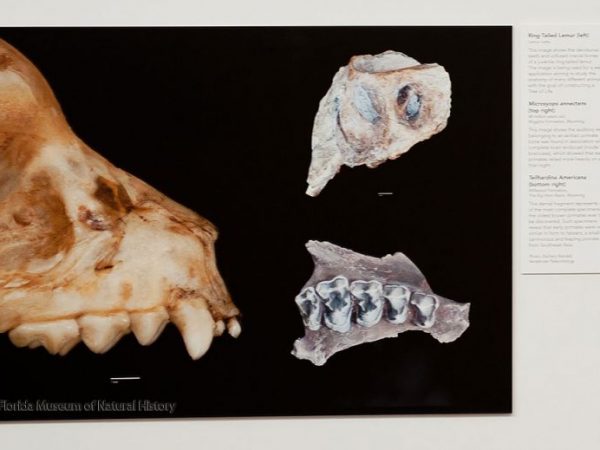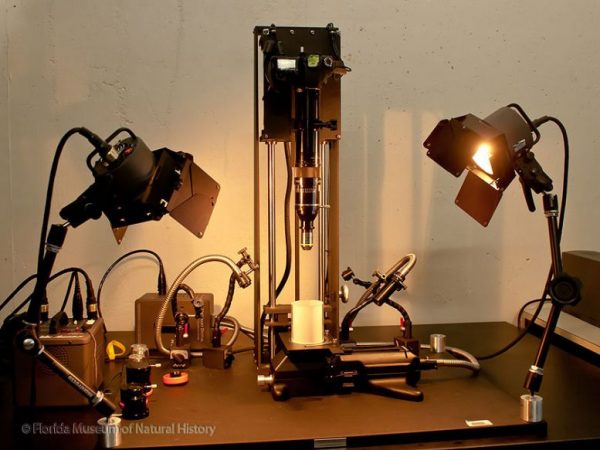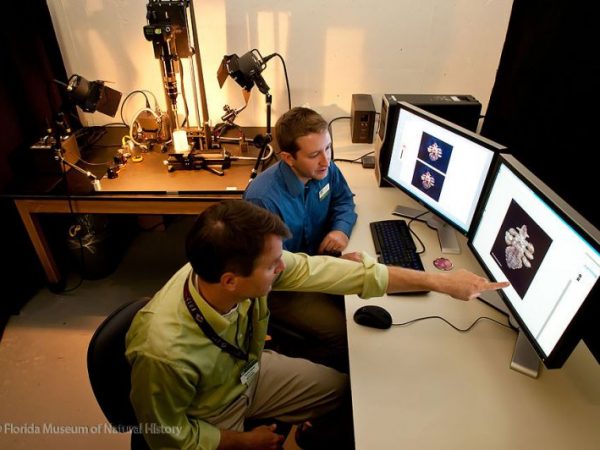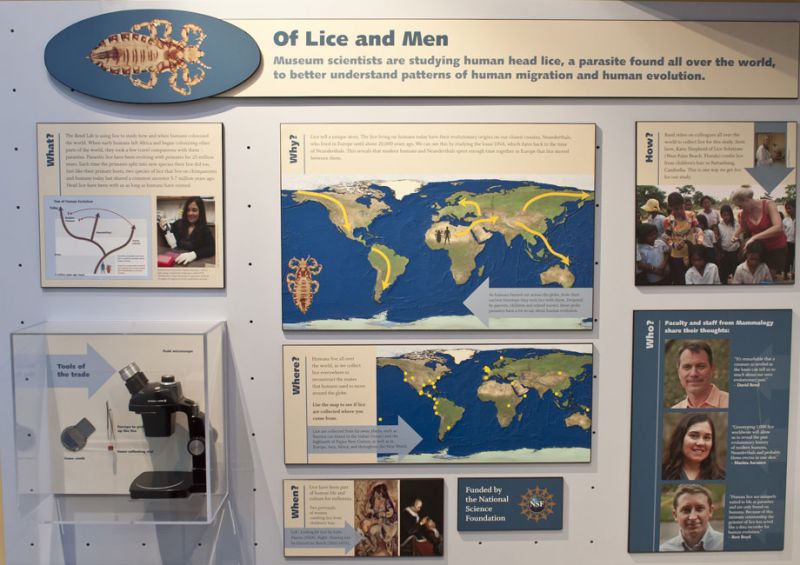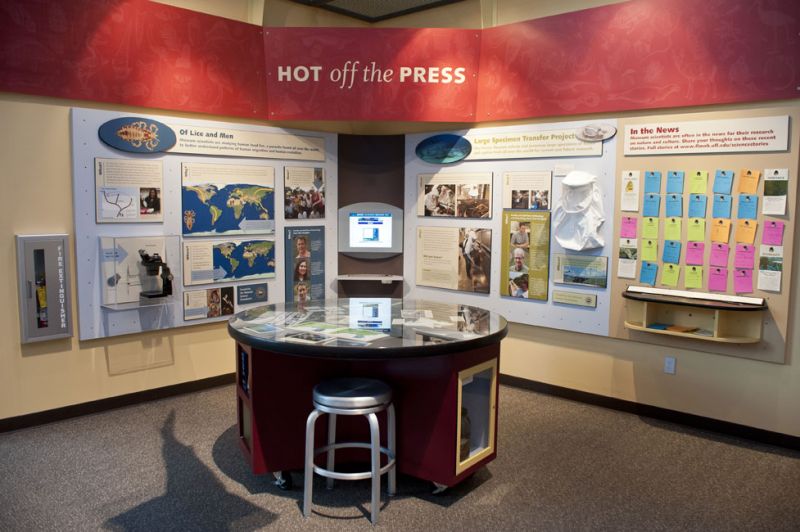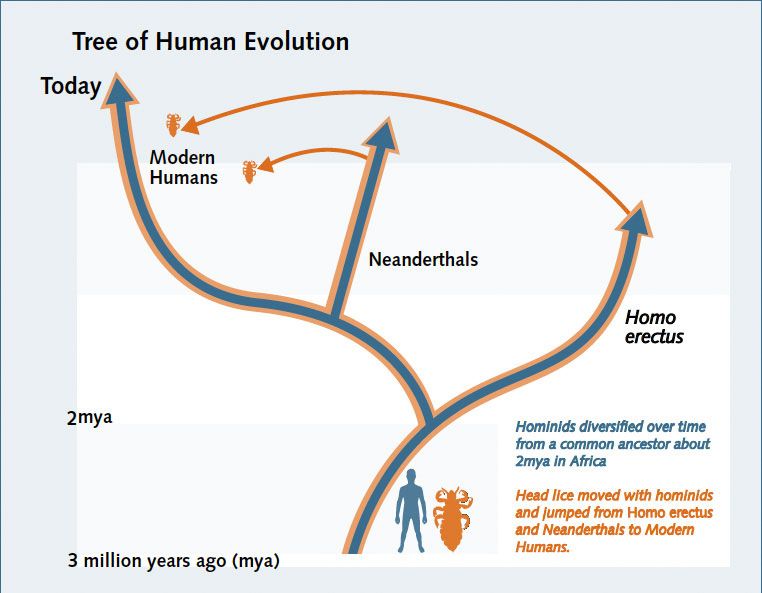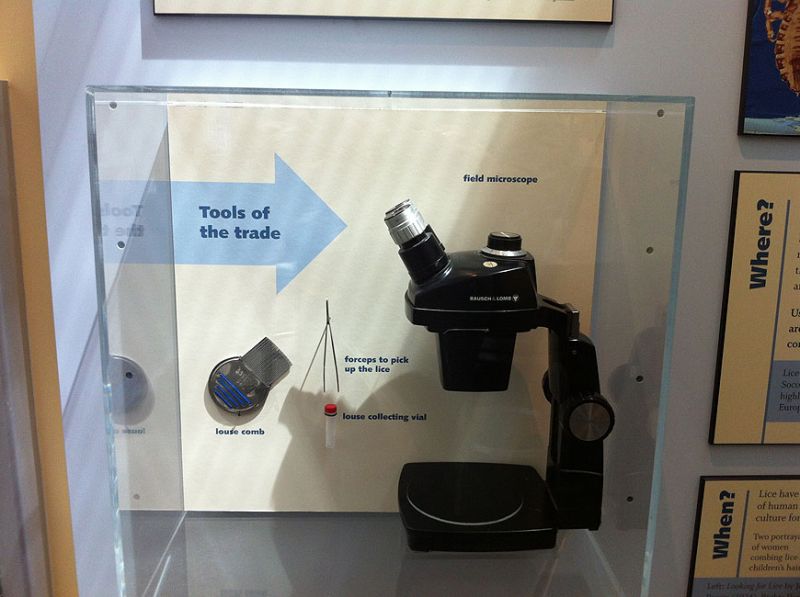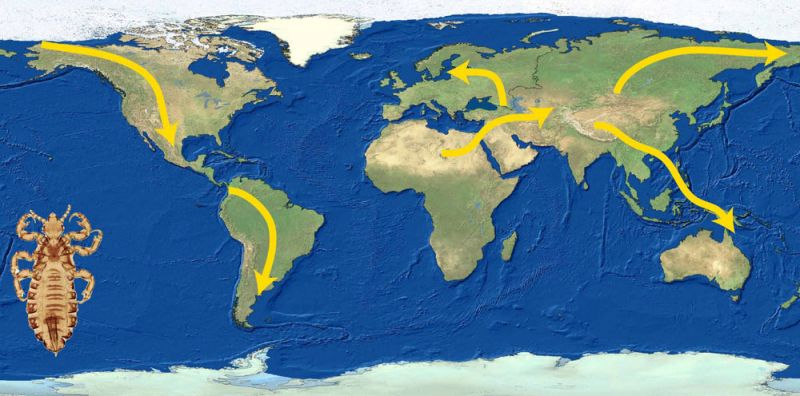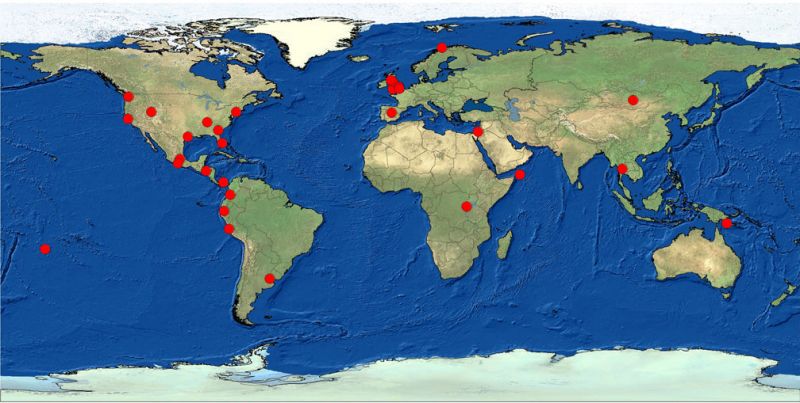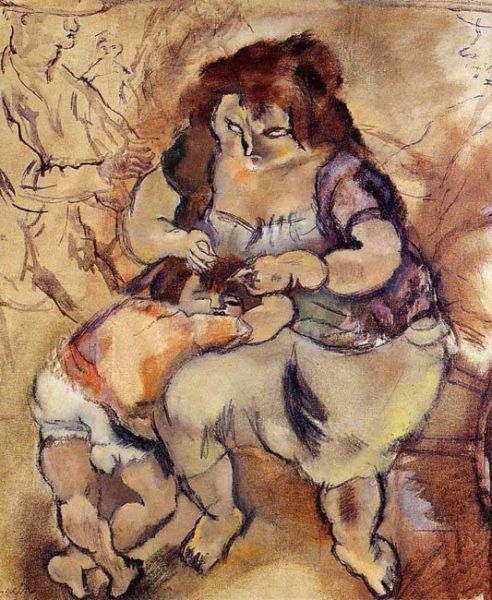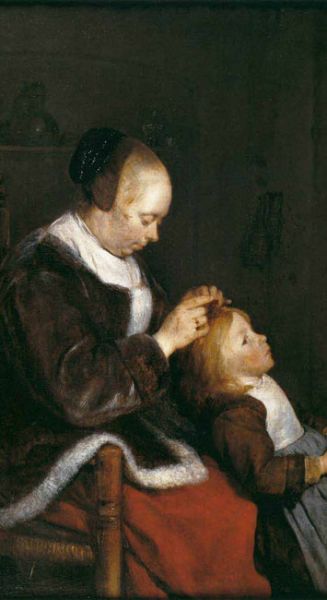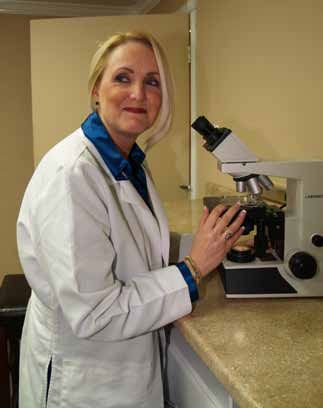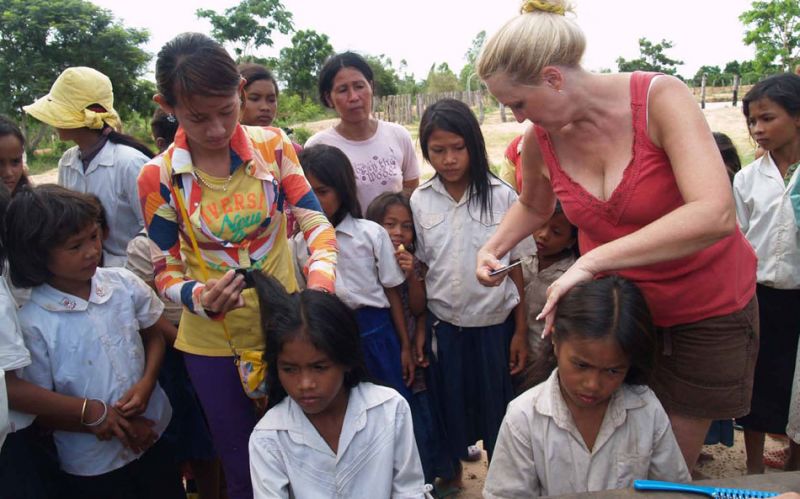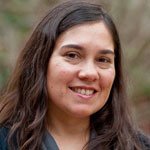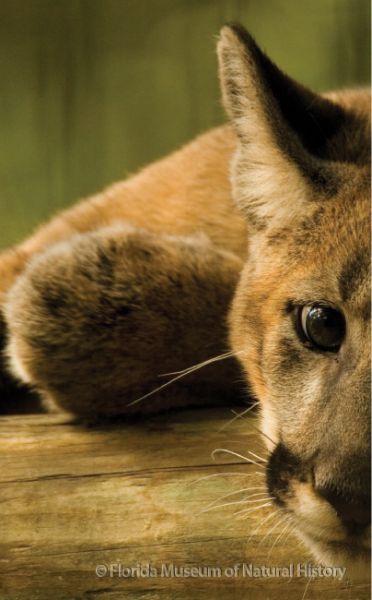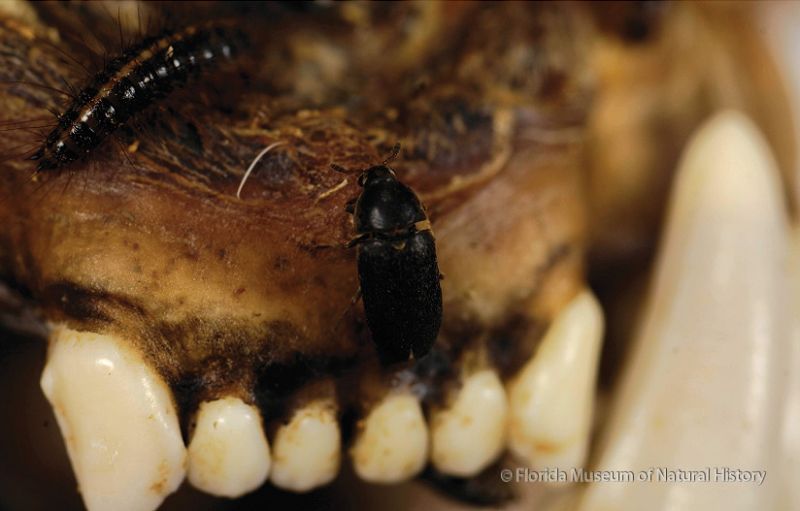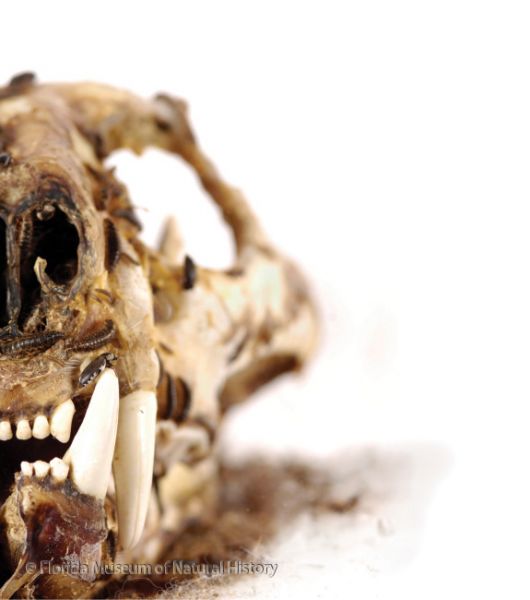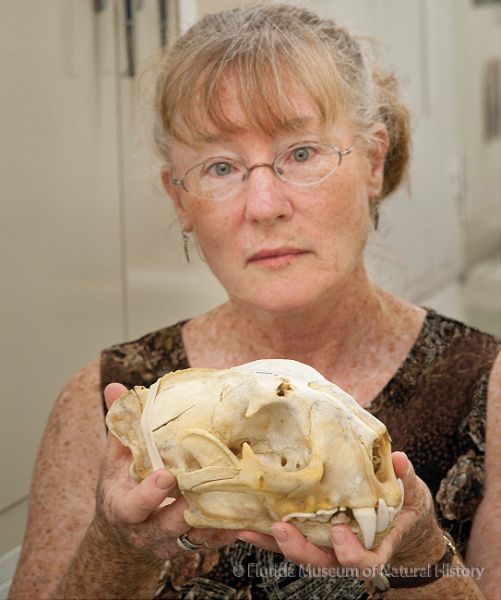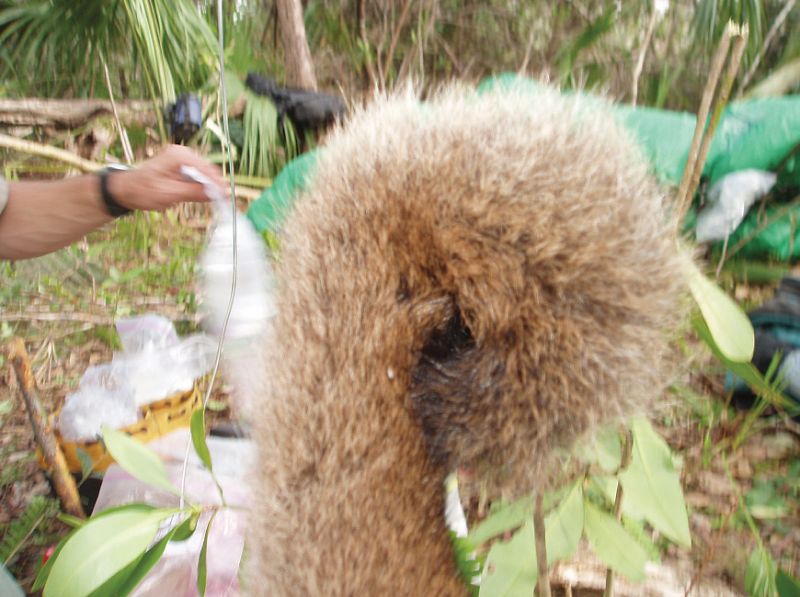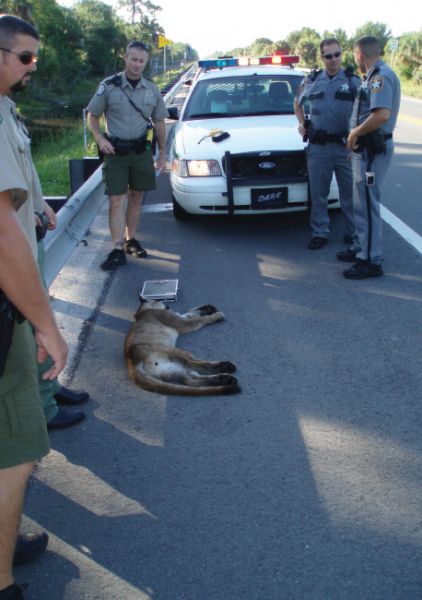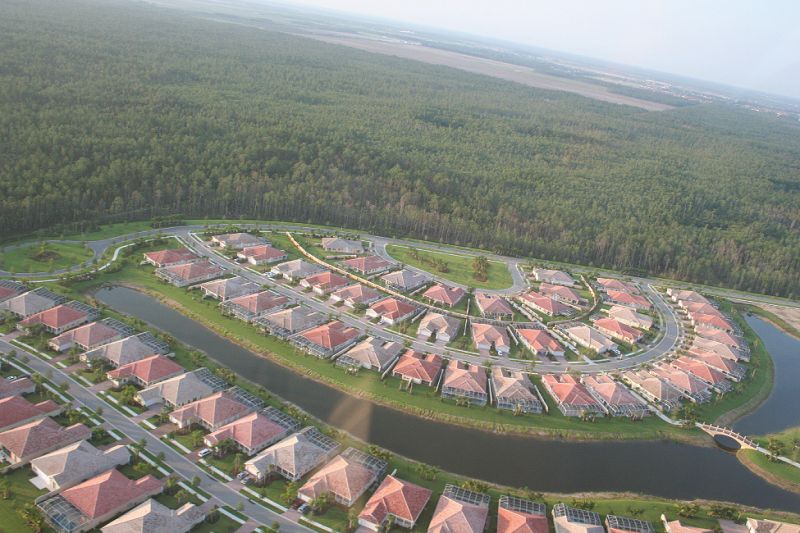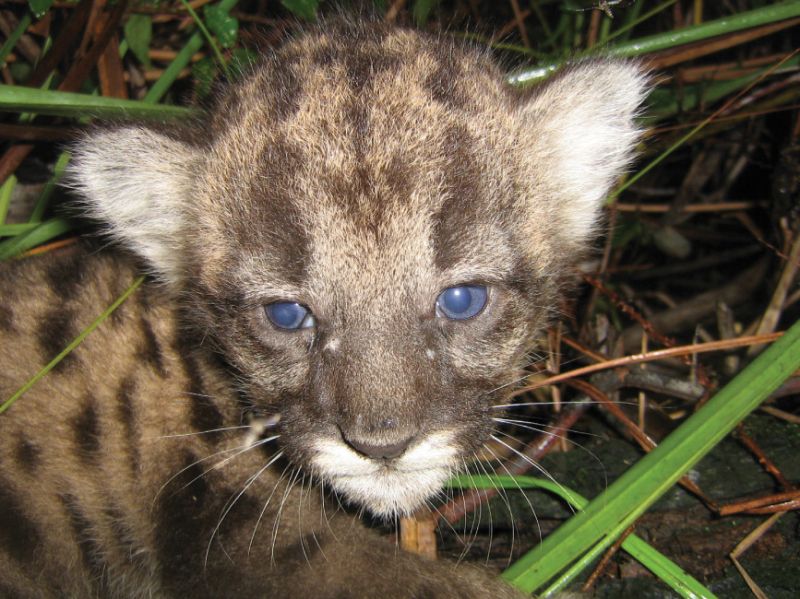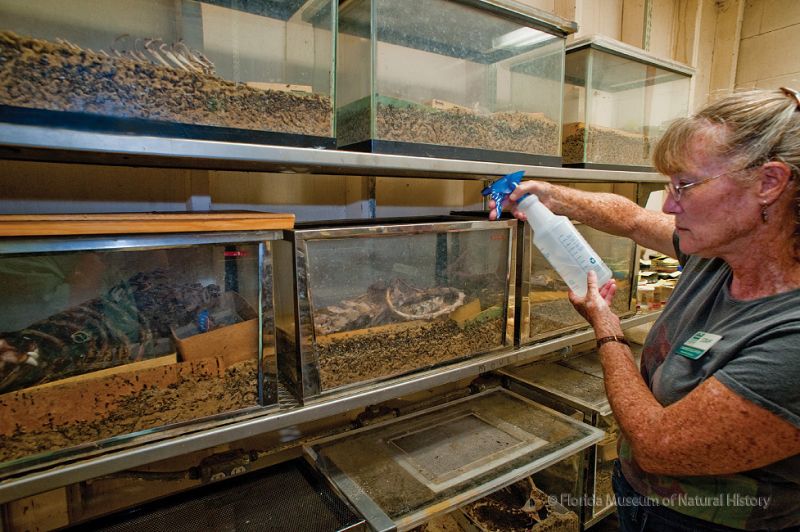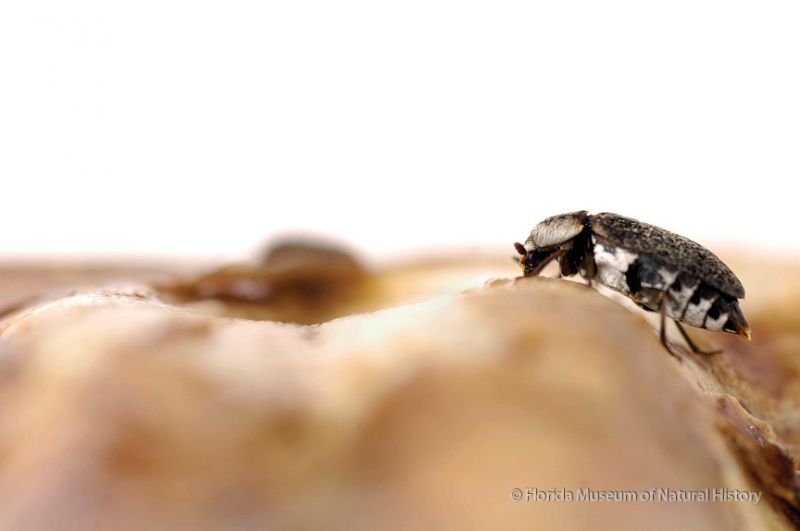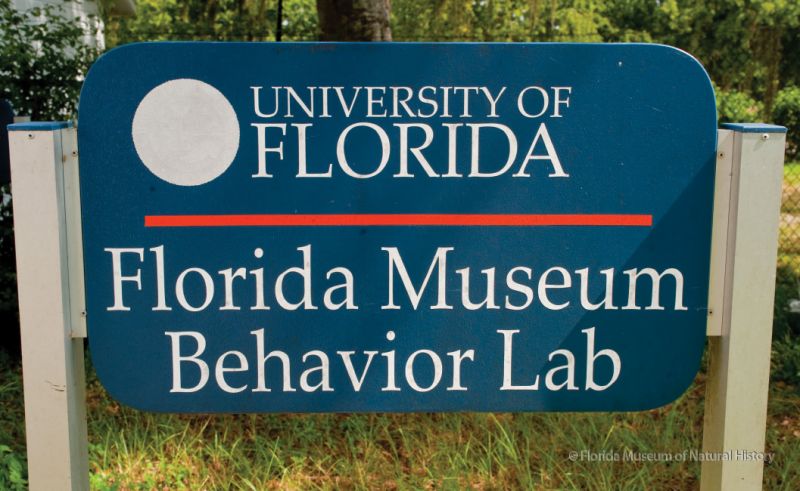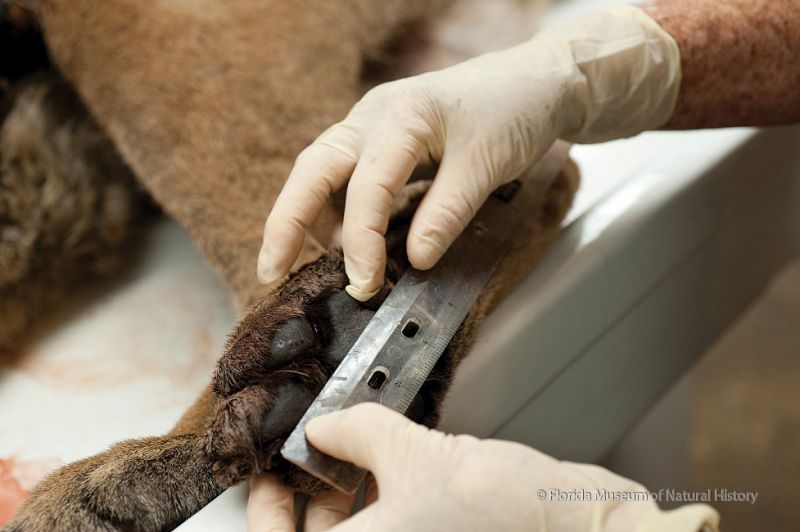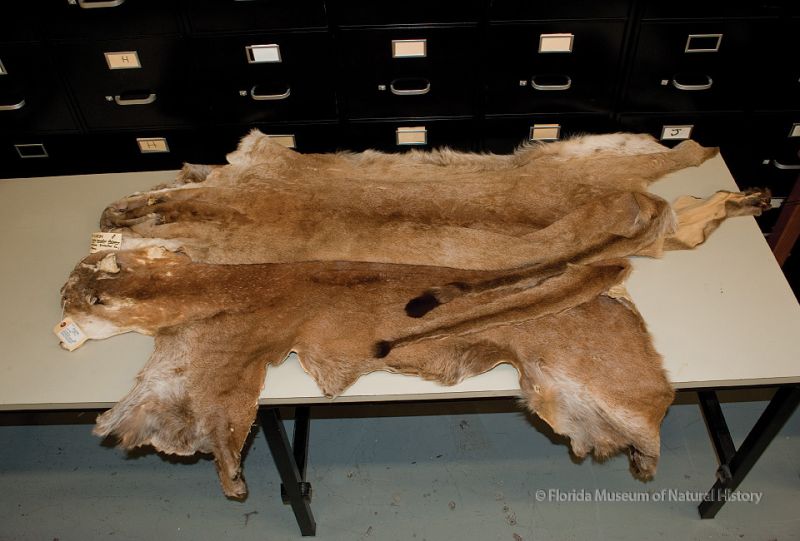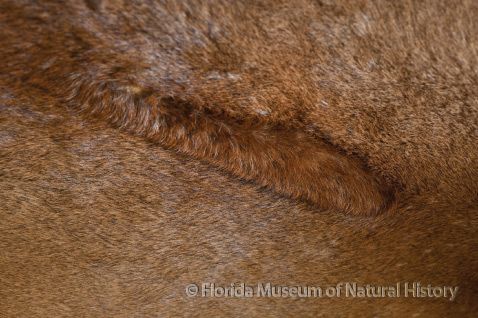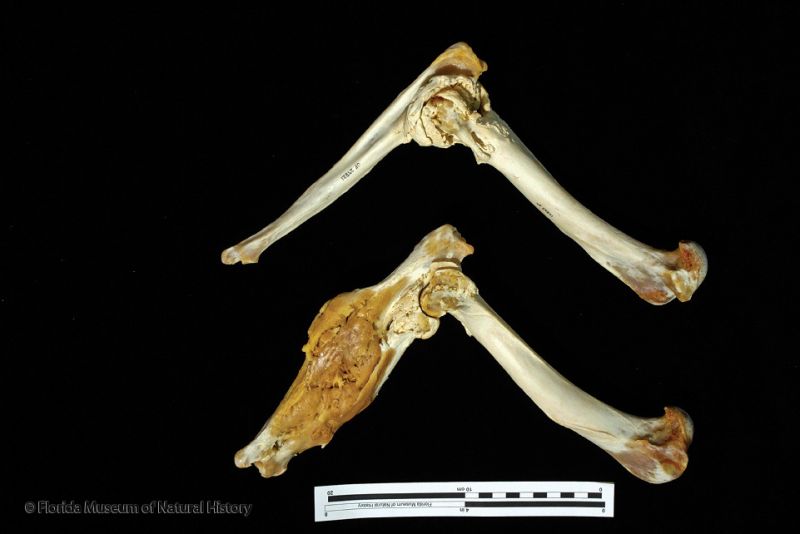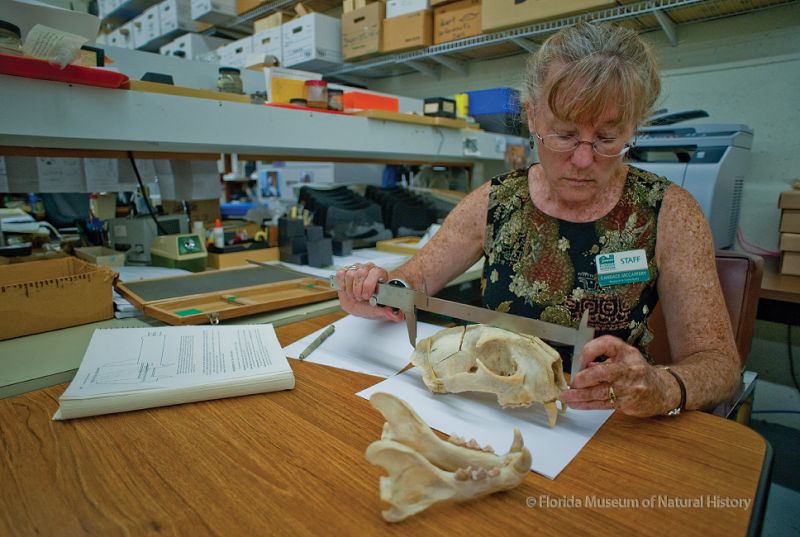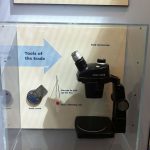 The mammals collection staff and students contribute to museum exhibits and media presentations about research projects, and students regularly do presentations on their works and public outreach.
The mammals collection staff and students contribute to museum exhibits and media presentations about research projects, and students regularly do presentations on their works and public outreach.
On a semester basis, each division within the museum is invited to display posters representative of its students’ research in a display case outside Dickinson hall. In the fall of 2012, graduate students in the Mammals division developed an exhibit displaying ongoing research projects using collection resources. This exhibit enables each division to showcase projects facilitated by its collection and encourages public interest in research museums.
Using Ecological Niche Models to Explore Niche Evolution on West Indian Bats
Author: J. Angel Soto-Centeno, PhD candidate, Department of Biology (Zoology).
Reevaluating the Status of Mazama deer from Pearl Islands, Panama
Author: Ty Christian, Undergraduate student and Jorge L. Pino, PhD candidate, Department of Biology (Zoology).
Geographic Diversity of Pediculus humanus across the Americas
Authors: Jackie Fane, Undergraduate, Department of Biology (Zoology). Marina S. Ascunce, Post Doc, Florida Museum. Gebreyes Kassu, Undergraduate. Ariel Toloza, Centro de Investigaciones de Plagas e Insecticidas, Buenos Aires, Argentina. Maria I. Piccolo, Centro de Investigaciones de Plagas e Insecticidas, Buenos Aires, Argentina. David L. Reed, Associate Curator of Mammals, Florida Museum.
Integrative Biology of Acoustic Communication in Neotropical Singing Mice
Authors: Bret Pasch, PhD candidate, Department of Biology (Zoology) Polly Campbell, Department of Ecology & Evolutionary Biology, University of Arizona Steven M. Phelps, Section of Integrative Biology, University of Texas.
An NSF CAREER grant awarded to Dr. David Reed provided the funding to purchase a high-resolution imaging station for photographing specimens used in research. This custom built camera can take very hi-res images of specimens as small as a louse or as large as a whale skull. The images are used for both research and for documenting the specimens in the collections at the Florida Museum. The camera was so successful and widely used that the Museum put together an exhibit called “Depth of Field” that highlights the camera itself and images that were taken with it. The exhibit is a flat, 2-D installation in the Galleria of Powell Hall, the Museum’s public exhibit building. After its run in 2013 the images will be available for display in other venues.
In this exhibit the Reed lab shows how we use human lice to better understand certain aspects of human evolution and human migrations around the world. We can do this because lice have been traveling with us for a long time… throughout our evolutionary history. In fact, lice are known from Egyptian and Incan mummies, with the oldest dating back to 10,000 years ago.
To tackle these questions, we gather a large number of lice from all over the world, thanks to our collaborators. In the laboratory, we extract DNA from each louse and use it to compare human louse populations around the globe. Because lice can be transmitted through a host-to-host contact, we can use lice to uncover interactions between populations of humans and even with other hominids such as Neanderthals. If you want to learn more about our research please follow the thumbnails bellow that lead you through our exhibit.
WHAT?
When early humans left Africa and began colonizing other parts of the world, they took a few travel companions with them – parasites. Parasitic lice have been evolving with primates for 25 million years. Each time the primates split into new species their lice did too. Just like their primate hosts, two species of lice that live on chimpanzees and humans today last shared a common ancestor 5-7 million years ago. Head lice have been with us as long as humans have existed.
Lice tell a unique story. Some of the lice living on humans today have their evolutionary origins on our closest cousins, Neanderthals, who lived in Europe until about 20,000 years ago. We can see this by studying the louse DNA, which dates back to the time of Neanderthals. This reveals that modern humans and Neanderthals spent enough time together in Europe that lice moved between them.
As humans fanned out across the globe, from their earliest footsteps they took lice with them. Despised by parents, children and school nurses, these pesky parasites have a lot to say about human evolution.
WHERE?
Human live all over the world, so we collect lice everywhere to reconstruct the routes that humans used to move around the globe.
Use the map below to see if lice are collected where you come from.
WHEN?
Lice have been part of human life and culture for millennia. Two portrayals of women combing lice from children’s hair below.
WHO?
Reed relies on colleagues all over the world to collect lice for this study. Seen here, Katie Shepherd of Lice Solutions (West Palm Beach, Florida) combs lice from children’s hair in Battanbang, Cambodia. This is one way we get lice for our study.
Faculty and staff from Mammalogy share their thoughts:

“It’s remarkable that a creature so reviled as the louse can tell us so much about our own evolutionary past.”
– David Reed
Explore Research: Bats in the Caribbean
The Florida Museum has produced dozens of videos for their series “Explore Research,” which highlights research done at The University of Florida. The Museum serves as a conduit to disseminate highly technical university-based research to the public in a language they can understand. Explore Research is an area of the Museum’s public exhibits that has been built just for this purpose. Each video, along with a 3-dimensional exhibit, runs for several months and can be seen by Museum visitors for free. The video below is a video that we produced with the Museum about our research in the Caribbean. It features Ph.D. candidate Angelo Soto-Centeno.
The Beetles: A Skeleton Crew | Florida Panther exhibit
Florida Panthers are listed as endangered and are under constant threat in Florida. Their range is limited to south Florida and thanks to a very successful program to breed them with female cats brought in from Texas, the panthers are still hanging on. When a Florida Panther is found dead, it is brought to the Florida Museum where we maintain their remains for future study. An exhibit was shown at the Florida Museum to demonstrate the challenges with Florida Panthers and what the Museum and other state and federal agencies are doing to protect them. The images below are from that exhibit.
In 2017, the Florida Museum of Natural History marked its 100th anniversary as the state’s official natural history museum. As part of the centennial celebration, the Florida Museum created an extraordinary exhibit exploring the key role museum collections play in telling the story of life on Earth.

Rare, Beautiful & Fascinating: 100 Years @FloridaMuseum celebrated the Museum’s rich history and featured objects that reveal stories about everything from human health to prehistoric life to invasive species. Each Museum collection was asked to contribute its most interesting items and share the stories that make them special.
Though the physical exhibit is closed, the companion website remains online, providing an opportunity to experience the Florida Museum’s most treasured specimens.
